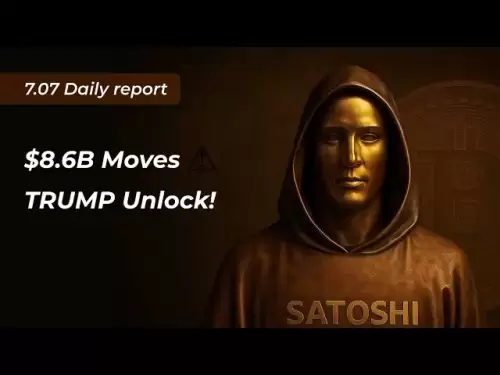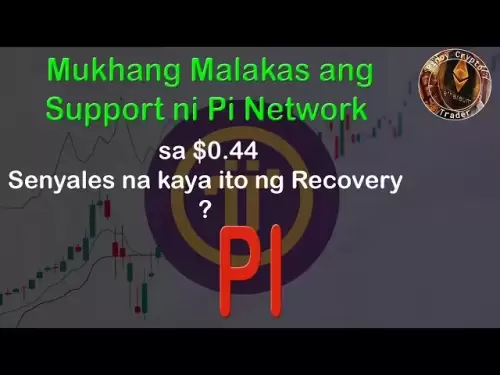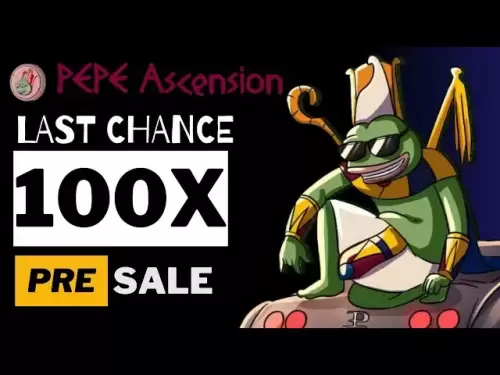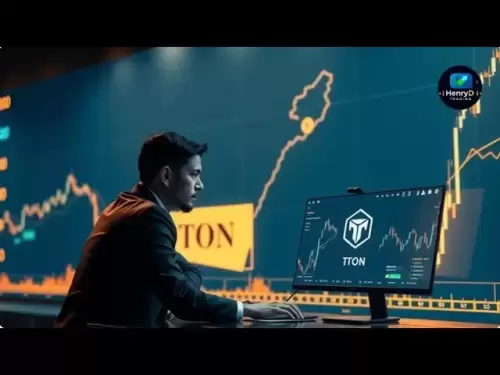-
 Bitcoin
Bitcoin $108,708.8110
0.60% -
 Ethereum
Ethereum $2,561.6057
1.91% -
 Tether USDt
Tether USDt $1.0001
-0.03% -
 XRP
XRP $2.2795
0.57% -
 BNB
BNB $662.2393
1.00% -
 Solana
Solana $153.1346
3.74% -
 USDC
USDC $1.0000
0.00% -
 TRON
TRON $0.2877
0.97% -
 Dogecoin
Dogecoin $0.1710
3.93% -
 Cardano
Cardano $0.5871
1.61% -
 Hyperliquid
Hyperliquid $39.6663
1.68% -
 Sui
Sui $2.9032
0.79% -
 Bitcoin Cash
Bitcoin Cash $496.1879
1.71% -
 Chainlink
Chainlink $13.5807
3.01% -
 UNUS SED LEO
UNUS SED LEO $9.0777
0.61% -
 Stellar
Stellar $0.2514
4.51% -
 Avalanche
Avalanche $18.1761
1.86% -
 Shiba Inu
Shiba Inu $0.0...01173
1.72% -
 Toncoin
Toncoin $2.8010
-4.23% -
 Hedera
Hedera $0.1594
3.21% -
 Litecoin
Litecoin $87.0257
-0.53% -
 Monero
Monero $319.1217
1.79% -
 Polkadot
Polkadot $3.3853
0.68% -
 Dai
Dai $0.9999
-0.01% -
 Ethena USDe
Ethena USDe $1.0003
0.02% -
 Bitget Token
Bitget Token $4.3420
-0.97% -
 Uniswap
Uniswap $7.3772
1.39% -
 Aave
Aave $286.6277
5.61% -
 Pepe
Pepe $0.0...09994
2.33% -
 Pi
Pi $0.4589
1.76%
What does the increase in the premium rate of UNI's USDT trading pair indicate?
The premium rate increase of UNI's USDT pair reflects high demand and potential arbitrage opportunities, influenced by market sentiment and liquidity on specific exchanges.
Apr 24, 2025 at 09:21 pm

The increase in the premium rate of UNI's USDT trading pair is a significant indicator within the cryptocurrency market, reflecting various dynamics and sentiments among traders and investors. This phenomenon can provide insights into the perceived value, demand, and market conditions surrounding Uniswap's native token, UNI. In this article, we will explore what an increase in the premium rate means, the factors that influence it, and how it can be interpreted within the broader context of the cryptocurrency market.
Understanding the Premium Rate
The premium rate of a cryptocurrency trading pair, such as UNI/USDT, is the difference between the market price of the cryptocurrency on a specific exchange and its price on other exchanges or its theoretical value. When the premium rate increases, it means that the price of UNI on the USDT trading pair on a particular exchange is higher than its price on other platforms or its expected value.
For instance, if UNI is trading at $10 on most exchanges but is trading at $11 on a specific exchange paired with USDT, the premium rate would be 10%. This increase in the premium rate can be influenced by several factors, including market demand, liquidity, and regulatory changes.
Factors Influencing the Premium Rate
Several key factors can lead to an increase in the premium rate of UNI's USDT trading pair:
Market Demand: High demand for UNI on a specific exchange can drive up its price relative to other platforms. If more traders are buying UNI on that exchange, the increased buying pressure can cause the price to rise, resulting in a higher premium rate.
Liquidity: The liquidity of the trading pair on a specific exchange plays a crucial role. If the liquidity is low, even small trades can significantly impact the price, leading to a higher premium rate. Conversely, high liquidity can stabilize the price and reduce the premium rate.
Regulatory Changes: Changes in regulations can affect the availability of certain trading pairs on different exchanges. If an exchange is one of the few platforms offering UNI/USDT trading, it may see an increase in the premium rate due to limited alternatives for traders.
Market Sentiment: The overall sentiment towards UNI and the broader cryptocurrency market can also influence the premium rate. Positive news or developments related to Uniswap can increase demand and drive up the premium rate on specific exchanges.
Interpreting the Increase in Premium Rate
An increase in the premium rate of UNI's USDT trading pair can be interpreted in several ways:
Increased Demand for UNI: A higher premium rate often indicates strong demand for UNI on a specific exchange. Traders may be willing to pay a higher price to acquire UNI, suggesting bullish sentiment towards the token.
Potential Arbitrage Opportunities: When the premium rate is high, it can create arbitrage opportunities for traders. They can buy UNI at a lower price on another exchange and sell it at a higher price on the exchange with the premium, profiting from the price difference.
Exchange-Specific Factors: The increase in the premium rate may be specific to the exchange offering the UNI/USDT trading pair. Factors such as promotional activities, user base, and trading volume can influence the premium rate on a particular platform.
Impact on Traders and Investors
The increase in the premium rate of UNI's USDT trading pair can have several implications for traders and investors:
Trading Strategies: Traders may adjust their strategies based on the premium rate. For example, they might focus on arbitrage opportunities or adjust their entry and exit points to account for the higher premium.
Investment Decisions: Investors may view the increase in the premium rate as a signal of strong demand and potential growth for UNI. This could influence their decision to buy or hold the token, depending on their investment goals and risk tolerance.
Risk Management: A high premium rate can introduce additional risk, especially for traders engaging in arbitrage. They need to consider the potential for price fluctuations and ensure they have sufficient liquidity to execute their trades effectively.
Monitoring and Analyzing Premium Rates
To effectively monitor and analyze the premium rate of UNI's USDT trading pair, traders and investors can follow these steps:
Use Multiple Exchanges: Compare the price of UNI on different exchanges to identify any discrepancies and calculate the premium rate. This can be done using trading platforms or third-party tools that aggregate price data.
Track Market News and Developments: Stay informed about news and developments related to Uniswap and the broader cryptocurrency market. Positive news can increase demand and drive up the premium rate, while negative news can have the opposite effect.
Analyze Historical Data: Review historical data on the premium rate to identify patterns and trends. This can help traders and investors anticipate potential changes and adjust their strategies accordingly.
Utilize Trading Tools: Use trading tools and software that provide real-time data and alerts on price movements and premium rates. These tools can help traders act quickly on arbitrage opportunities and monitor market conditions effectively.
FAQs
Q1: Can the premium rate of UNI's USDT trading pair fluctuate rapidly?
Yes, the premium rate can fluctuate rapidly due to changes in market demand, liquidity, and other factors. Traders need to monitor these fluctuations closely to capitalize on arbitrage opportunities and manage their risk effectively.
Q2: How can traders mitigate the risks associated with a high premium rate?
Traders can mitigate risks by diversifying their trading strategies, using stop-loss orders to limit potential losses, and maintaining sufficient liquidity to execute trades quickly. It's also important to stay informed about market conditions and adjust strategies accordingly.
Q3: Is a high premium rate always a positive indicator for UNI?
Not necessarily. While a high premium rate can indicate strong demand and bullish sentiment, it can also introduce additional risk and volatility. Traders and investors should consider the broader market context and their risk tolerance when interpreting the premium rate.
Q4: Can regulatory changes impact the premium rate of UNI's USDT trading pair?
Yes, regulatory changes can significantly impact the premium rate. If regulations limit the availability of certain trading pairs on specific exchanges, it can increase demand and the premium rate on the remaining platforms offering those pairs.
Disclaimer:info@kdj.com
The information provided is not trading advice. kdj.com does not assume any responsibility for any investments made based on the information provided in this article. Cryptocurrencies are highly volatile and it is highly recommended that you invest with caution after thorough research!
If you believe that the content used on this website infringes your copyright, please contact us immediately (info@kdj.com) and we will delete it promptly.
- BBVA's Crypto Leap: Bitcoin and Ethereum for the Masses?
- 2025-07-07 22:30:12
- Bitcoin, Strategy, and Windfalls: Decoding the Latest Moves
- 2025-07-07 22:30:12
- Bitcoin Mempool at Historical Lows: Trouble on the Horizon?
- 2025-07-07 21:10:12
- CleanSpark Dominates Bitcoin Mining: 50 EH/s and Beyond
- 2025-07-07 21:50:12
- BitFuFu's Bitcoin Mining Momentum: Hashrate Expansion and Market Dynamics in 2025
- 2025-07-07 21:15:12
- Pi Network's Studio Upgrade: Building the Web3 App Store, One Pioneer at a Time
- 2025-07-07 21:50:12
Related knowledge
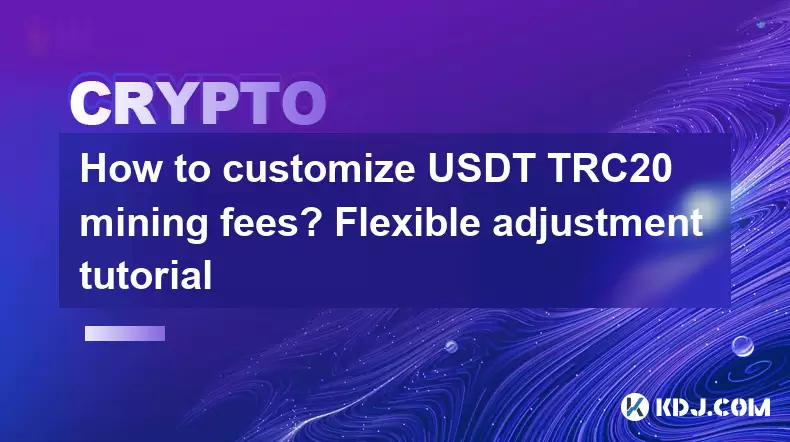
How to customize USDT TRC20 mining fees? Flexible adjustment tutorial
Jun 13,2025 at 01:42am
Understanding USDT TRC20 Mining FeesMining fees on the TRON (TRC20) network are essential for processing transactions. Unlike Bitcoin or Ethereum, where miners directly validate transactions, TRON uses a delegated proof-of-stake (DPoS) mechanism. However, users still need to pay bandwidth and energy fees, which are collectively referred to as 'mining fe...
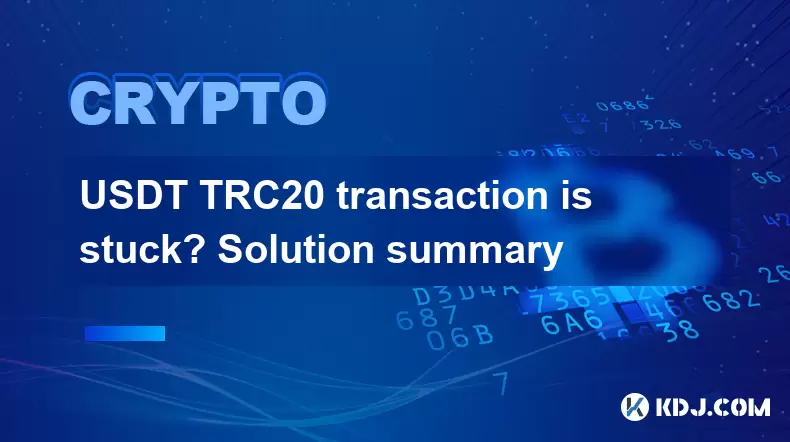
USDT TRC20 transaction is stuck? Solution summary
Jun 14,2025 at 11:15pm
Understanding USDT TRC20 TransactionsWhen users mention that a USDT TRC20 transaction is stuck, they typically refer to a situation where the transfer of Tether (USDT) on the TRON blockchain has not been confirmed for an extended period. This issue may arise due to various reasons such as network congestion, insufficient transaction fees, or wallet-rela...
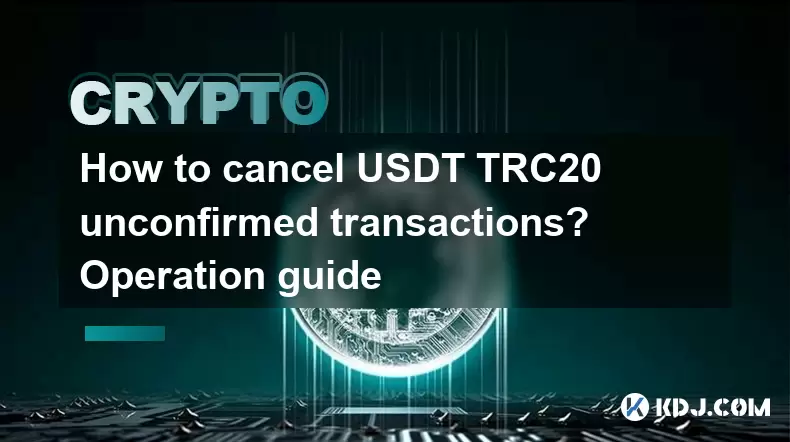
How to cancel USDT TRC20 unconfirmed transactions? Operation guide
Jun 13,2025 at 11:01pm
Understanding USDT TRC20 Unconfirmed TransactionsWhen dealing with USDT TRC20 transactions, it’s crucial to understand what an unconfirmed transaction means. An unconfirmed transaction is one that has been broadcasted to the blockchain network but hasn’t yet been included in a block. This typically occurs due to low transaction fees or network congestio...
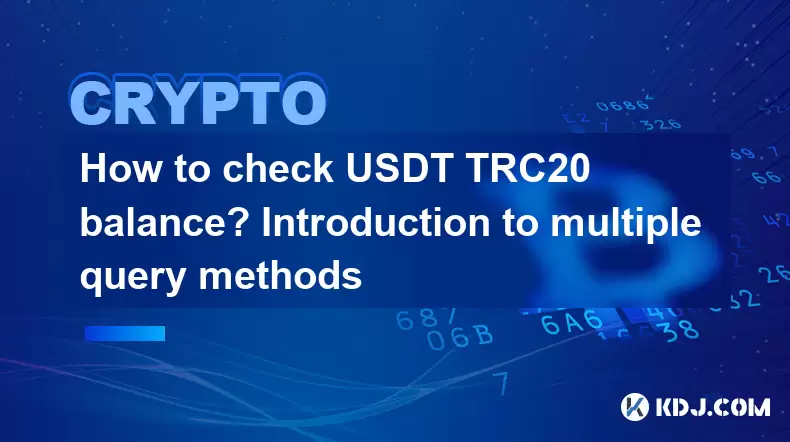
How to check USDT TRC20 balance? Introduction to multiple query methods
Jun 21,2025 at 02:42am
Understanding USDT TRC20 and Its ImportanceUSDT (Tether) is one of the most widely used stablecoins in the cryptocurrency market. It exists on multiple blockchain networks, including TRC20, which operates on the Tron (TRX) network. Checking your USDT TRC20 balance accurately is crucial for users who hold or transact with this asset. Whether you're sendi...
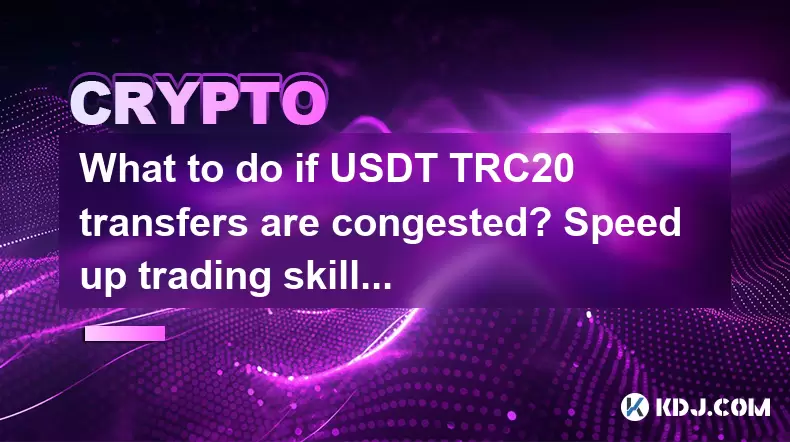
What to do if USDT TRC20 transfers are congested? Speed up trading skills
Jun 13,2025 at 09:56am
Understanding USDT TRC20 Transfer CongestionWhen transferring USDT TRC20, users may occasionally experience delays or congestion. This typically occurs due to network overload on the TRON blockchain, which hosts the TRC20 version of Tether. Unlike the ERC20 variant (which runs on Ethereum), TRC20 transactions are generally faster and cheaper, but during...
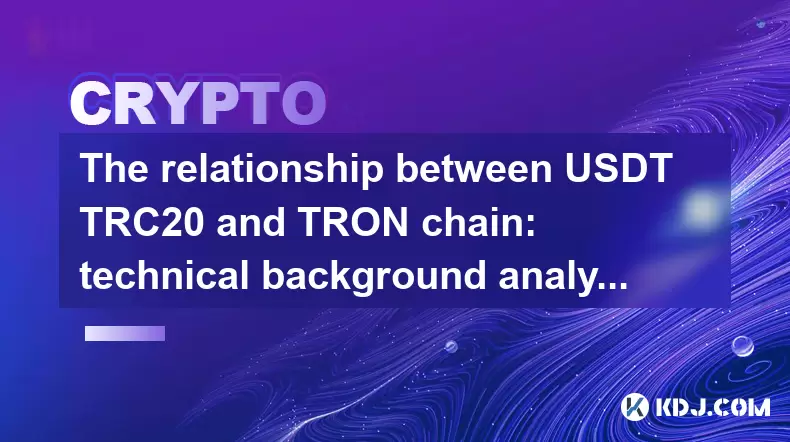
The relationship between USDT TRC20 and TRON chain: technical background analysis
Jun 12,2025 at 01:28pm
What is USDT TRC20?USDT TRC20 refers to the Tether (USDT) token issued on the TRON blockchain using the TRC-20 standard. Unlike the more commonly known ERC-20 version of USDT (which runs on Ethereum), the TRC-20 variant leverages the TRON network's infrastructure for faster and cheaper transactions. The emergence of this version came as part of Tether’s...

How to customize USDT TRC20 mining fees? Flexible adjustment tutorial
Jun 13,2025 at 01:42am
Understanding USDT TRC20 Mining FeesMining fees on the TRON (TRC20) network are essential for processing transactions. Unlike Bitcoin or Ethereum, where miners directly validate transactions, TRON uses a delegated proof-of-stake (DPoS) mechanism. However, users still need to pay bandwidth and energy fees, which are collectively referred to as 'mining fe...

USDT TRC20 transaction is stuck? Solution summary
Jun 14,2025 at 11:15pm
Understanding USDT TRC20 TransactionsWhen users mention that a USDT TRC20 transaction is stuck, they typically refer to a situation where the transfer of Tether (USDT) on the TRON blockchain has not been confirmed for an extended period. This issue may arise due to various reasons such as network congestion, insufficient transaction fees, or wallet-rela...

How to cancel USDT TRC20 unconfirmed transactions? Operation guide
Jun 13,2025 at 11:01pm
Understanding USDT TRC20 Unconfirmed TransactionsWhen dealing with USDT TRC20 transactions, it’s crucial to understand what an unconfirmed transaction means. An unconfirmed transaction is one that has been broadcasted to the blockchain network but hasn’t yet been included in a block. This typically occurs due to low transaction fees or network congestio...

How to check USDT TRC20 balance? Introduction to multiple query methods
Jun 21,2025 at 02:42am
Understanding USDT TRC20 and Its ImportanceUSDT (Tether) is one of the most widely used stablecoins in the cryptocurrency market. It exists on multiple blockchain networks, including TRC20, which operates on the Tron (TRX) network. Checking your USDT TRC20 balance accurately is crucial for users who hold or transact with this asset. Whether you're sendi...

What to do if USDT TRC20 transfers are congested? Speed up trading skills
Jun 13,2025 at 09:56am
Understanding USDT TRC20 Transfer CongestionWhen transferring USDT TRC20, users may occasionally experience delays or congestion. This typically occurs due to network overload on the TRON blockchain, which hosts the TRC20 version of Tether. Unlike the ERC20 variant (which runs on Ethereum), TRC20 transactions are generally faster and cheaper, but during...

The relationship between USDT TRC20 and TRON chain: technical background analysis
Jun 12,2025 at 01:28pm
What is USDT TRC20?USDT TRC20 refers to the Tether (USDT) token issued on the TRON blockchain using the TRC-20 standard. Unlike the more commonly known ERC-20 version of USDT (which runs on Ethereum), the TRC-20 variant leverages the TRON network's infrastructure for faster and cheaper transactions. The emergence of this version came as part of Tether’s...
See all articles





















